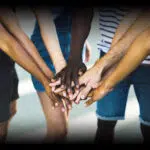National Therapeutic Recreation Month is observed in February to appreciate the works of recreation therapists. It also focuses on raising awareness of the importance of participating in activities that help people with disabilities recover and heal. Did you know that therapeutic recreation goes as far back as the 1850s with Florence Nightingale? Therapeutic recreation is the use of leisure activities to promote the health, emotional wellbeing, skills, and abilities of people with illnesses or disabilities. Therapeutic recreation includes drama, music, arts and crafts, sports, dance and movement, as well as games. Therapeutic recreation is available in various settings, including hospitals, schools, community centers, sports programs, and assisted living facilities.
History of National Therapeutic Recreation Month
Recreation has always been part and parcel of human lives in one form or another. The earliest organized recreation in human history can be traced to ancient Egypt. Recreation then was determined by a class system, where the lower class participated in athletics and sports, and the upper class spectated for entertainment. By 641 A.D., recreational activities, such as swimming, running, ball games, and board games, were played in ancient Egypt, Greece, and Rome.
With the advent of industrialization in the 18th and 19th centuries, recreation became regimented and bound by time. During this period, the recreation movement began in the United States — an export from Berlin, Germany, by Dr. Marie Zakrzewska. That led to the development of a playground in 1885 at the Children’s Mission on Parameter Street in Boston. The community used this playground to carry out drills under the guidance of matrons. Due to its success and contribution to the community’s wellbeing, several playgrounds were developed across Boston through the efforts of the Massachusetts Emergency and Hygiene Association.
The years between the 1940s and 1950s marked the beginning of therapeutic recreation as a profession. That was years after Florence Nightingale introduced the idea of using recreation to improve a patient’s health. The Red Cross hired recreation workers to provide hospital recreation programs to wounded and traumatized soldiers during World War II. After the war, the programs were established in the Veterans’ Administration (V.A.) Hospital system. Over the years, recreation therapy programs spread to state psychiatric hospitals and state residential schools for persons with mental disabilities. In the 1960s, the National Therapeutic Recreation Society (N.T.R.S.) was established as a branch of the National Recreation and Park Association (N.R.P.A.). The society went on to form National Therapeutic Recreation Week in 1984. Due to various disagreements, recreation therapists broke from the organization and formed the American Therapeutic Recreation Association on June 12, 1984. After its creation, the A.T.R.A. assumed responsibility for the National Therapeutic Recreation Week and made February National Therapeutic Recreation Month.
National Therapeutic Recreation Month timeline
The Red Cross hires recreation workers to provide hospital recreation programs.
The National Therapeutic Recreation Society becomes an association under the National Recreation and Park Association.
N.T.R.S. designates the second week of July as the National Therapeutic Recreation Week.
Recreation therapists establish the American Therapeutic Recreation Association on June 12.
National Therapeutic Recreation Month FAQs
What is an example of recreational therapy?
Examples of recreational therapy include art therapy, music therapy, yoga and meditation, and various outdoor activities.
What is the goal of recreational therapy?
Recreational therapy focuses on helping people with disabilities or illnesses live fully functional and independent lives.
What is the difference between therapeutic recreation and recreational therapy?
While recreational therapy is the practice, therapeutic recreation is the field. Recreational therapists are professionals that study therapeutic recreation and practice recreational therapy.
How to Observe National Therapeutic Recreation Month
Show appreciation
National Therapeutic Recreation Month is all about celebrating the good works of recreation therapists. So, if you have a recreation therapist that has been crucial to your wellbeing, you can send them a thank-you note or card, a mug, or get them their favorite meal from their favorite restaurant. If you own a practice with a therapeutic recreation department, you can appreciate your recreation therapists by giving them a gift or taking them out for lunch.
Host a discussion on therapeutic recreation
Many people don’t know about therapeutic recreation or its benefits to people living with disabilities, illnesses, or elderly people. As a practice, you can use this National Therapeutic Recreation Month to educate people about it. Host a panel discussion with recreation therapists, discussing therapeutic recreation and its benefits. You can have this panel discussion online to reach a wider audience or at your local community center.
Organize a contest
Games are a part of therapeutic recreation activities, and your recreation therapists will enjoy participating in them. The games can be hosted at your practice, or better yet, at the local community center, where everyone can participate. These games could be chess or other board games, dancing, running, and art competitions.
5 Mind-Blowing Facts About Recreation
Americans love recreation
According to a report by the Physical Activity Council, about 60% of Americans participated in some type of outdoor sport in 2018.
Cycling goods are the most profitable
Cycling sports goods rake in up to $51 billion per year.
Running has a place in Americans’ hearts
About 58 million Americans participate in running every year, more than any other outdoor activity.
Americans are big outdoor recreation spenders
Americans spend a whopping $120 billion on outdoor recreation equipment and gear each year.
China has the most bicycles globally
There are more than half a billion bicycles within the country’s borders.
Why National Therapeutic Recreation Month is Important
Therapeutic recreation strengthens interpersonal skills and relationships
Disabilities or illnesses can prevent people from fully interacting with other people, leading to feelings of loneliness and isolation. By engaging in group therapeutic recreational activities, these individuals can develop friendships and social bonds, which helps reduce their sense of isolation and uplift their spirits.
Therapeutic recreation improves physical strength
Therapeutic recreation usually involves intense activities such as tai chi, yoga, exercise, and dance. People that participate in these activities experience improvement in their balance, flexibility, and physical strength.
Therapeutic recreation promotes cognitive abilities
Therapeutic recreation helps improve the healthy functioning of the mind through activities that stimulate the brain. These include social interaction, physical exercise, and mental games such as chess and brain challenges.
National Therapeutic Recreation Month dates
| Year | Date | Day |
|---|---|---|
| 2025 | February 1 | Saturday |
| 2026 | February 1 | Sunday |
| 2027 | February 1 | Monday |
| 2028 | February 1 | Tuesday |
| 2029 | February 1 | Thursday |





























































































































